The Future of Club Life is a Hyperpop Rave Called Subculture
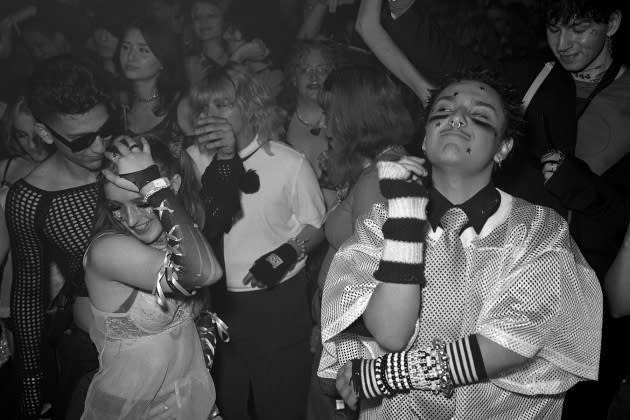
“Looking for Subculture?” asks a bouncer at the L.A. club Catch One. “In more ways than one,” I reply as I pull out my ticket to the hyperpop rave happening inside. As a turquoise band is wrapped around my wrist, an artist named Babylungs, who’s dressed like a cybergoth hosting a Pride party at Chuck E. Cheese in the year 2040, walks to the front of the line. Their makeup includes abstract graphics painted above and below their eyes, and two of their pink braids stand erect on top of their head, molded into the shape of a heart. After they’re whisked inside, the bouncer turns back to me and smiles: “Yeah…you’re definitely in the right place.”
Inside, I’m greeted with a bear hug by Tyler Shepherd, who co-founded Subculture with his boyfriend, Gannon Baxter, in 2018. Shepherd gives me the lay of the clubland, explaining that there are three unique stages, each with its own sonic identity. “The music at Subculture is really varied, even though it’s all lumped under the hyperpop umbrella,” says Umru, a producer signed to the British label PC Music, and a regular performer at Subculture. “They do a great job of mixing PC Music people and those influenced by them with DJs who do experimental dance music, and people from the SoundCloud world who are more rap-influenced.”
More from Rolling Stone
Hoodies Are Much More Than Loungewear -- Here Are Ten Examples to Prove It
Dutton Ranch Style: Wrangler Drops New 'Yellowstone' Apparel Collection for Fans of the Hit Show
A$AP Nast Wants to Liven Up Your Eyewear With New Warby Parker Sunglasses
I make my way through the wormhole of Catch One’s dark corridors and arrive at the Jewels stage, where a mosh pit is forming as an artist scream-sings in vocoder over the sounds of a metal track, mixed with what sound like samples of R2D2 from Star Wars. After I’ve been sufficiently doused by all of the Red Bull vodkas and tequila sodas splashing around the pit, I move to the Underground stage, where a 7-foot-tall drag queen is introducing the queer pop artist Gia Woods. “Are you ready to get LESBIONIC?!” she asks, referencing one of Wood’s tracks. Everyone cheers. A group of furries weave their way through the crowd in a conga line, while another man dances with a Furby that has glowing, light-up eyes. At various points throughout the show, he raises the Furby up into the air like Simba in the Lion King and twirls it around. On the other side of the room, a musician and record label owner who goes by Starmax is duck-walking in a cipher of friends. When I reach the final stage, Noise&Tavern, the electro-indie artist Demi Yo’ko is making their performance debut. At the set’s climax, Yo’ko climbs on the speakers and makes it rain on the crowd with heart-shaped confetti. I wonder if this is the only party in the world where people are vogueing and moshing simultaneously.
Back in the outdoor area, I find a seat on a bench across from a clique of pastel goths passing around a vape. When a crowd of party-goers squeezes by us, my cheek nearly grazes the ass cheek of a stranger in a thong. The hammer and sickle tattoo on their butt is exactly at my eye level. One of the Subculture’s biggest draws is its changing themes, which are designed to bring out the club kid Party Monsters in the TikTok generation. The theme this evening, Heart Destroyerz, is a Valentine’s Day riff on the Cock Destroyers, the British porn-stars-turned-internet-comedians (and gay icons), but past editions have included Alien Abduction, Dungeonz & Dragonz, and Toxic Future. The sea of outfits on display is a smorgasbord of internet trends, but also — given the wealth of fishnets, chains, animal-eared hats, and anime references — one of the best unintentional advertisements for Hot Topic I’ve ever seen. Many people look like they could have been found on disgraced beauty influencer Jeffree Star’s Top 8 in MySpace’s heyday. “Take me back to 2006,” reads one Instagram caption of a group photo taken at the party.
“I’ve been coming to Subculture since the taqueria days!” says partygoer Tigre Ferguson, referring to Shepherd and Baxter’s first-ever venue — a queer-owned Mexican restaurant in Santa Ana. When they started Subculture five years ago, the Orange County natives were both working as social media managers for gay clubs in the area. “We had so many ideas about how to make nightlife more exciting,” says Baxter, 28, who was eager to liberate gay parties from the constraints of Top 40 hits.
Instead, Shepherd and Baxter wanted to play the experimental pop music they loved, made by the artists on A.G. Cook’s record label, PC Music — like Hannah Diamond, Danny L Harle, and Namasenda (who took the stage after Gia Woods) — and the many acts they inspired, like Alice Longyu Gao and Fraxiom. “Sophie is the heart of all of this,” Ferguson says, referring to the late producer who greatly influenced the genre now commonly known as hyperpop.
About that genre label: Many artists in the scene have rejected it, and even Subculture’s founders have mixed feelings. “The term hyperpop has no meaning at all,” says Shepherd, 27. “It’s just a label Spotify invented in 2019 to showcase new and experimental pop music that was maximal-sounding and that didn’t follow traditional pop formulas.”
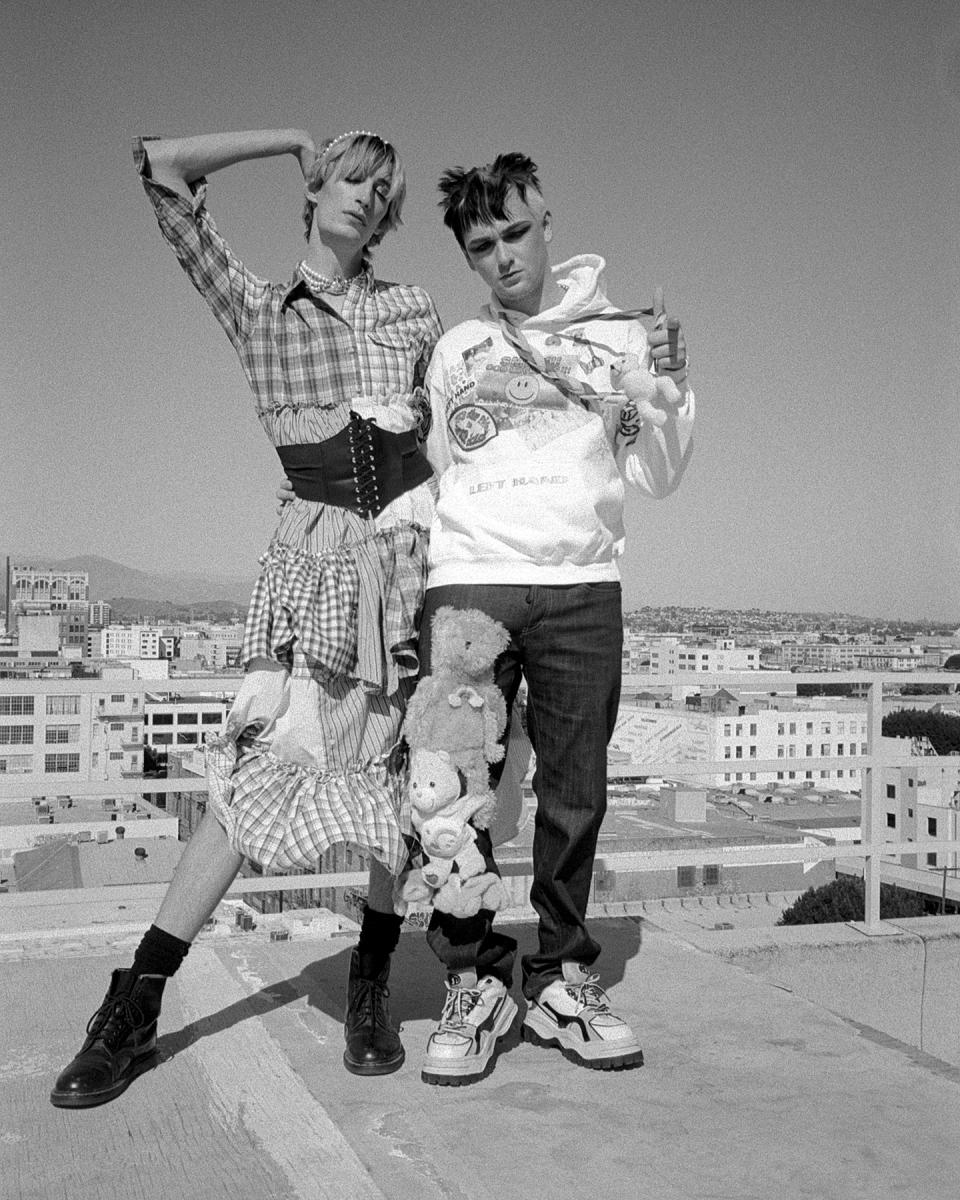
Given how contentious that word has become, I ask if they ever had reservations in branding their event as a “hyperpop rave.” Shepherd says no: “Not every artist we work with owns that term, but for us, it’s just a tool to quickly convey what realm of music we’re talking about. ‘Experimental’ casts too wide of a net.” In any case, Subculture quickly struck a chord with the genre’s rabid and rapidly growing online fandom, which they felt lacked an analog presence in nightlife.
Just as Subculture was gaining steam, the pandemic hit. Shepherd and Baxter opted to move the party online, rather than retire it entirely. They use a lot of weather metaphors to describe what happened next. “It was the perfect storm!” “Lightning struck!” “Everything snowballed!” At its peak, Subculture’s Zoom parties had more than 1,000 guests. Their popularity allowed them to book talents like Pussy Riot, Dorian Electra, and Rebecca Black, as well as countless other DJs, producers, and musicians who were struggling during Covid.
For a year, Shepherd and Baxter personally hosted and moderated six-hour long Zoom parties every Saturday night. They didn’t make a dime, but they were paid in messages of gratitude that said things like “This party saved my life.” When they were finally able to host another in-person event, they sold all 300 tickets in just two days. “Cut to now: we just wrapped a two-day event for Boiler Room and have done parties in San Francisco, New York, and Chicago,” Baxter says.
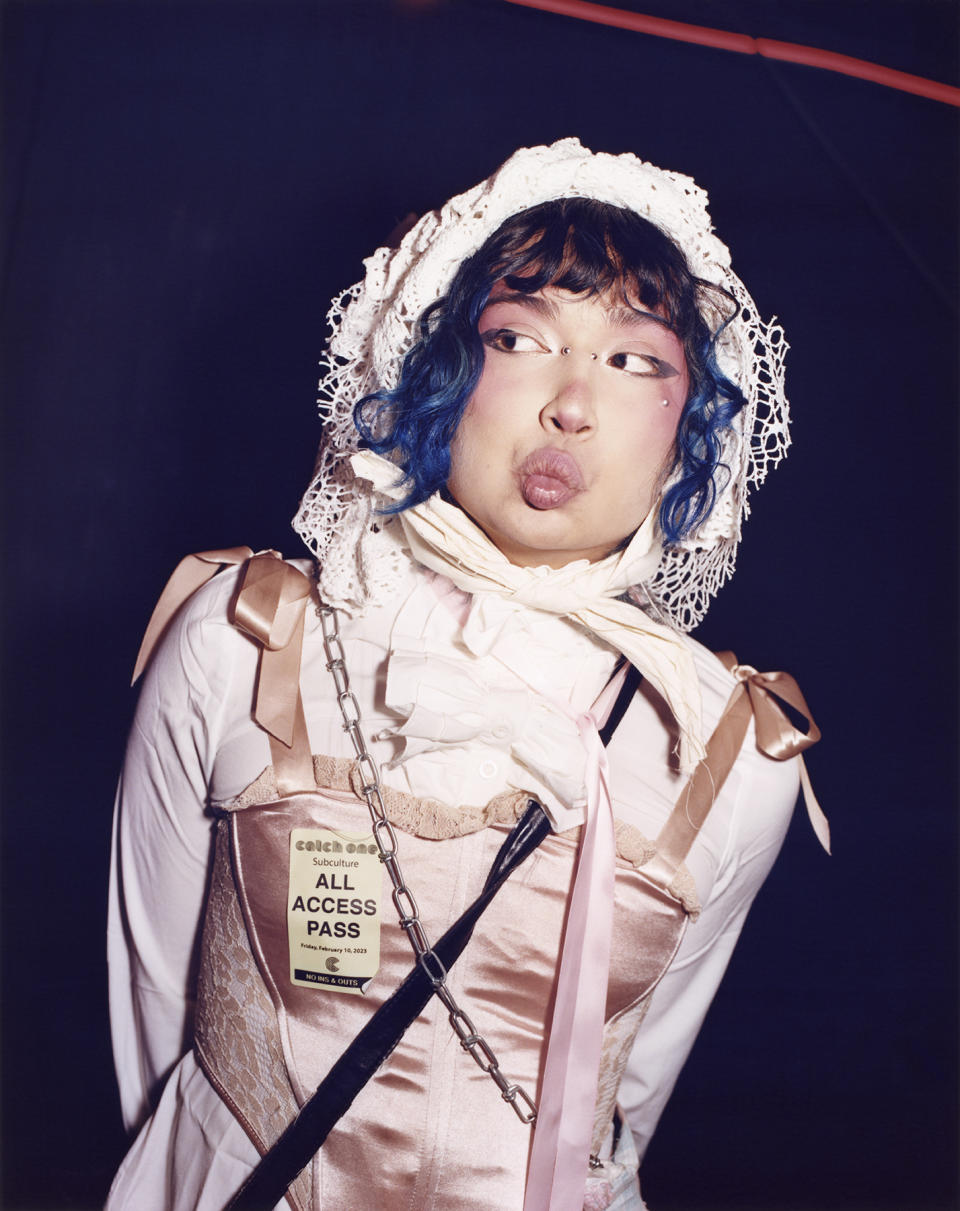
Despite expanding dramatically in size and scope, Subculture has retained its commitment to supporting underground and up-and-coming acts. The party has become a crucial platform for many artists who are making waves online, but who might not yet have an opportunity to perform elsewhere because their followings aren’t substantial enough or their sound is too “out there.” “Subculture is more than just a party, it’s a place where people have great taste,” says Gao, one of the hyperpop pioneers who first inspired Shepherd and Baxter to start Subculture (though Gao says their work is better described as “gay music” or “punk music”). “I’ve met collaborators and friends there, and have had the opportunity to connect with so many fans.”
Gao, who often plays Subculture, is a celebrity at the party — and believes Shepherd and Baxter’s use of the term hyperpop is a form of reclamation. “Gay kids and minority kids created this world for ourselves, for our own joy,” they say. “When corporations milk it for their own profit, they change the meaning of what we’ve built and strip us of our identities. Subculture gave me back a home that had been taken from me. When I go there, I’m reminded that I still matter.”
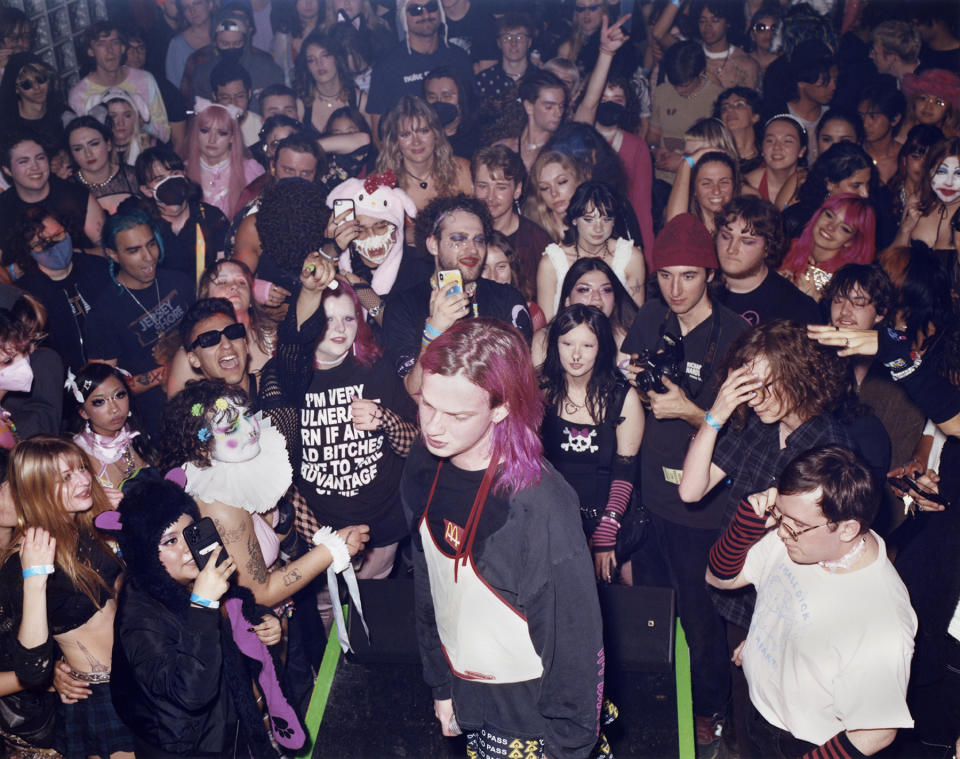
While the word “rave” might bring to mind racing pulses and gurning jaws, the atmosphere at Subculture is extremely relaxed. “I grew up going to raves and warehouse parties in L.A., and this feels different in a good way,” says songwriter and producer Jordan Baum. “Queerness and intersectionality were not a part of the culture then. It was very straight and it felt very dark.”
Of the 10 people I speak with at the party, eight of them either make music or work in the industry, suggesting that Subculture is an increasingly valuable networking event for those in the know. “The more boxes you check, the more people you draw in,” says a Cal Arts graduate and musician known as NC7teen. “Tonight I’ve met people who do hip-hop, EDM, and indie. Seeing all of this LGBTQ inclusion means a lot to me, because I didn’t get to see a lot of that where I grew up.”
His friend, a producer who goes by SOSKenzo, adds: “Most parties in L.A. are this mansion-type shit, with rappers sitting in the corner, shades on, arms crossed. It’s nice to see people actually enjoying themselves here and not trying to be something they’re not.”
Shepherd and Baxter have always set out to battle the elitist, standoffish, and “too cool” atmospheres that often characterize L.A. nightlife. At Subculture, Hot Topic isn’t the only vestige of the past that has come dramatically back into fashion: The ethical ethos of EDM culture and Kandi raving is also in the air. “The energy is very PLUR, as in peace, love, unity and respect. The vibe is always very pure and kind,” Shepherd says. “We’re just happy that what we’re putting out into the world is being well-received and mirrored back to us,” adds Baxter.
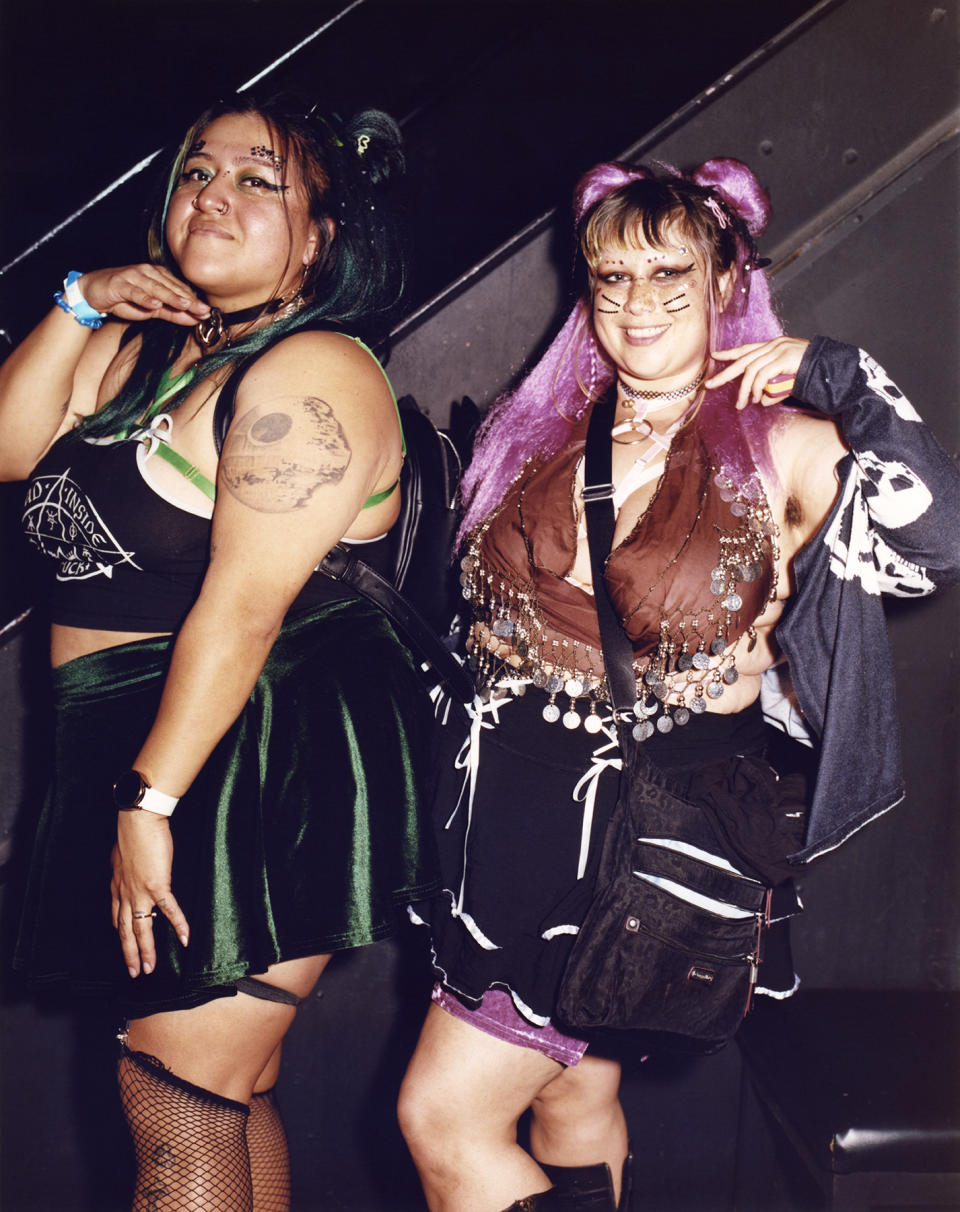
Humor and irony are pillars of hyperpop, but there is something remarkably sincere about Subculture and its fandom. What makes the party so unique in the nightlife landscape right now, according to Umru, is the purity of its intentions. “Rave is almost too in the zeitgeist now,” he says. “There are fully corporate events being called raves. Tyler and Gannon are just supporting the artists they love. It’s 100 percent genuine and is influencing other promoters, which can only be positive. Subculture isn’t following a trend — it set the trend.”
Launch Gallery: Subculture: Photos from the L.A. Hyperpop Rave
Best of Rolling Stone
